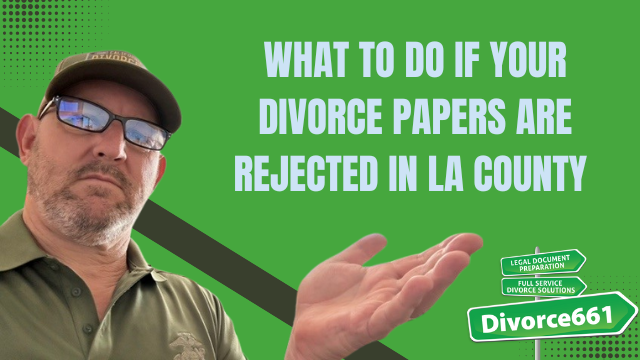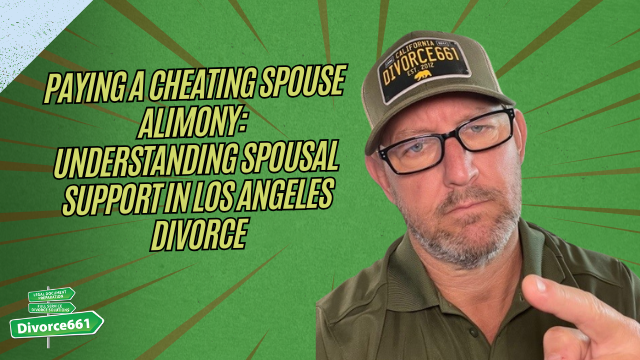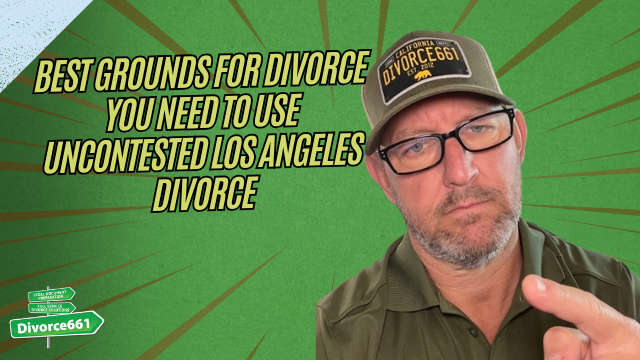What to Do If Your Divorce Papers Are Rejected in LA County
Introduction
I’m Tim Blankenship with Divorce661. If you filed your own divorce in Los Angeles County and just received a rejection notice from the court, don’t panic. I created a video that walks through exactly why rejections happen and what to do next. Below I summarize the practical steps, common mistakes, and how to get your case back on track quickly and correctly.
Why LA County Rejects Divorce Papers
Los Angeles County courts are strict about paperwork. With the shift to eFiling, even small mistakes can cause a filing to be kicked back. A rejection is not the end of your case—it’s a signal that something in the submission doesn’t meet the court’s requirements.
Common reasons for rejection
- Incomplete forms: Required fields left blank or forms not fully filled out.
- Missing attachments: Exhibits, attachments, or mandatory supporting documents not included.
- Wrong signatures: Missing signatures, incorrect signatory, or unsigned declarations.
- Improper formatting: Incorrect margins, font size, page numbering, or unpermitted redactions.
- Wrong form versions: Using an outdated form or a non-approved version for the court.
- Errors with eFiling: Uploading the wrong file type, corrupted files, or mislabeling documents in the filing system.
Why DIY and Online Form Services Often Lead to Rejections
Many people use online form services or try to handle the filing themselves to save money. What they discover is that those services don’t always account for local court rules, required attachments, or the precise formatting LA County expects. When the court rejects a package, you’re left to interpret the rejection notice and correct the problem on your own—often leading to wasted time and mounting frustration.
What to Do Immediately After a Rejection
Follow these steps to move forward without starting over:
- Read the rejection notice carefully. The court will usually identify why the filing was rejected. Note every item listed.
- Compare your submission to the court checklist. Cross-check forms, signatures, attachments, and form versions against LA County requirements.
- Correct the specific issues. Fix only what’s identified when possible—don’t change other parts unless necessary.
- Resubmit electronically. Make sure your corrected package follows eFiling guidelines: proper file types, correct cover sheets, and accurate document titles.
- If you’re unsure, get help. A quick review by someone experienced with LA County eFiling can prevent repeated rejections.
How I Help: Judgment Correction & Re-Filing Service
At Divorce661, we specialize in correcting rejected divorce cases in Los Angeles County. When a judgment or an entire case stalls, we:
- Review everything you’ve submitted to identify the court’s reasons for rejection.
- Correct forms, signatures, and attachments so they meet LA County rules.
- Resubmit the package electronically with the correct eFiling protocol.
- Follow up until the court approves the judgment or filing.
What to expect when you hire us
- Flat-fee pricing—no hidden costs.
- 100% remote service for all of Los Angeles County.
- Experts in LA eFiling and local court requirements.
- Fast turnaround so delays don’t drag on for months.
Real Client Example
One recent client had tried to submit their divorce judgment three times and was rejected each time. After hiring us, we reviewed the paperwork, corrected every issue, and resubmitted electronically within a week. The court approved the judgment a few days later and the client’s case was finally completed after months of delay. This kind of turnaround is common when the root causes are identified and addressed correctly.
How to Avoid Future Rejections
- Use the most current court-approved forms—check the LA County website for updates.
- Follow filing checklists and eFiling rules precisely.
- Double-check signatures and dates before submission.
- Label and organize attachments clearly so the court can find required documents.
- When in doubt, get a professional review before resubmitting.
Conclusion and Next Steps
If your divorce papers have been rejected in LA County, remember: don’t panic. Most rejections can be corrected without starting over. If you need help diagnosing the rejection and getting your paperwork resubmitted correctly, visit divorce661.com to schedule a free consultation. We’ll review your situation, fix the errors, and help get your divorce finalized quickly and accurately.
“A rejection doesn’t mean you have to start over. In most cases, the issue can be corrected and the paperwork resubmitted.”
If you’d like help right away, go to divorce661.com and schedule your free consultation. We’ll handle the technical details so you can move forward.




